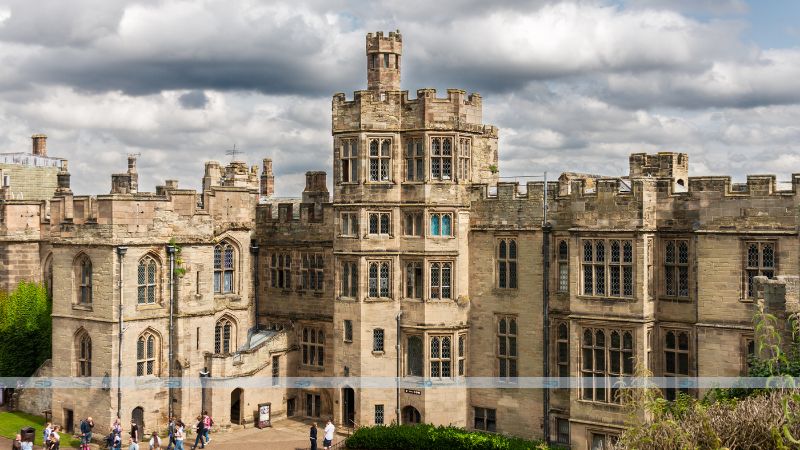As King Charles III’s coronation takes place in London, experience nearly a millennium of grandeur and history at a starting price of just $230 per night.
On May 6, as King Charles III is crowned, the world will witness a once-in-a-lifetime event packed with over a millennium of British splendor and ceremony, not seen since his mother’s coronation in 1953. However, for some, a single day may not suffice.
The United Kingdom abounds with castles, providing travelers the opportunity to roam the same corridors and rest in the same chambers as past monarchs. Those captivated by the majestic display at Westminster Abbey might also desire to immerse themselves in the regal history embedded in the ancient stone walls of these castles.
“The past thousand years of royal history in Great Britain is like an ongoing soap opera,” said Tracy Borman, a London-based royal historian and author of “Crown & Sceptre,” which chronicles the British monarchy from William the Conqueror to Charles III. “With six marriages for one king, a virgin queen, multiple battlefield crown exchanges, abdications, usurpations, and scandals, it’s the ultimate drama.”
Staying in a castle can feel like taking on a small role in this grand narrative. “People never forget their castle stay experience,” said Roger Masterson, also known as the Castle Man, founder of Celtic Castles, a travel company and booking platform that collaborates with over 100 castles throughout the United Kingdom.
Over the past year, Mr. Masterson observed a surge in bookings for Scottish castles, which he believes is due to the media coverage of Queen Elizabeth II’s funeral and the royal family’s return to London from Balmoral Castle, a favored vacation spot for the queen. “It truly showcased the best of Scotland,” he said.
While these six British castles may not be Balmoral, they provide travelers the opportunity to immerse themselves in history and experience a lifestyle reminiscent of, if not royalty, at least the nobility.
Hever Castle
Located in Kent, known as the “Garden of England,” a mere 35 miles from Buckingham Palace, Hever Castle takes visitors on a 700-year journey into the past. Its enchanting architecture boasts a medieval sandstone gatehouse, a double moat, and two portcullises accessible by a drawbridge.
Guests staying at the 27-room bed-and-breakfast or the four-bedroom cottage situated within the estate’s 125-acre grounds are granted complimentary access to the exhibition rooms filled with historical relics and a four-acre Italianate garden. The castle’s oak and walnut-paneled rooms display artifacts such as a prayer book owned by Boleyn, complete with her inscriptions and signature. Exhibited until November are the coronation robes donned by Cate Blanchett in the 1998 film “Elizabeth.”
Room rates start at £185 ($230) on weekdays and £210 on weekends; day passes for the castle and gardens are priced at £23.10, tax included.
Scone Palace
Over 40 Scottish kings, including Macbeth, were crowned at Moot Hill, situated within the grounds of Scone Palace in central Scotland.
The 12th-century Gothic structure of Scone Palace, which served as the Scottish Parliament’s seat for centuries, has been home to a long lineage of earls from the Murray family, who still own the castle today. Travelers can rent the private wing, accommodating 16 guests across eight bedrooms. The dining room, drawing room, and long gallery exude an aristocratic ambiance with regal furnishings, such as ivory, porcelain, royal portraits, and silk brocade wall coverings. The estate’s 100 acres enchant visitors with blossoming gardens, 250-year-old Douglas fir trees, and a star-shaped maze made of green and copper beech hedges, inspired by the Earl of Mansfield’s family tartan.
During guided tours, visitors can view a replica of the Stone of Scone, a sacred seat used in the coronation ceremonies of Scottish kings. “In 1296, King Edward I of England took the stone and brought it to Westminster Abbey,” explained Stephen Brannigan, the head of Scone Palace.
The palace’s most renowned visit occurred in 1842 when Queen Victoria and Prince Albert stayed en route to the Highlands. The Fourth Earl bore considerable expense and, despite expressing the visit’s inconvenience in a letter, recognized that declining was not an option. Prices begin at £4,500 per night (two-night minimum) for 10 people, inclusive of breakfast and tax; each additional guest costs £450 per night.
